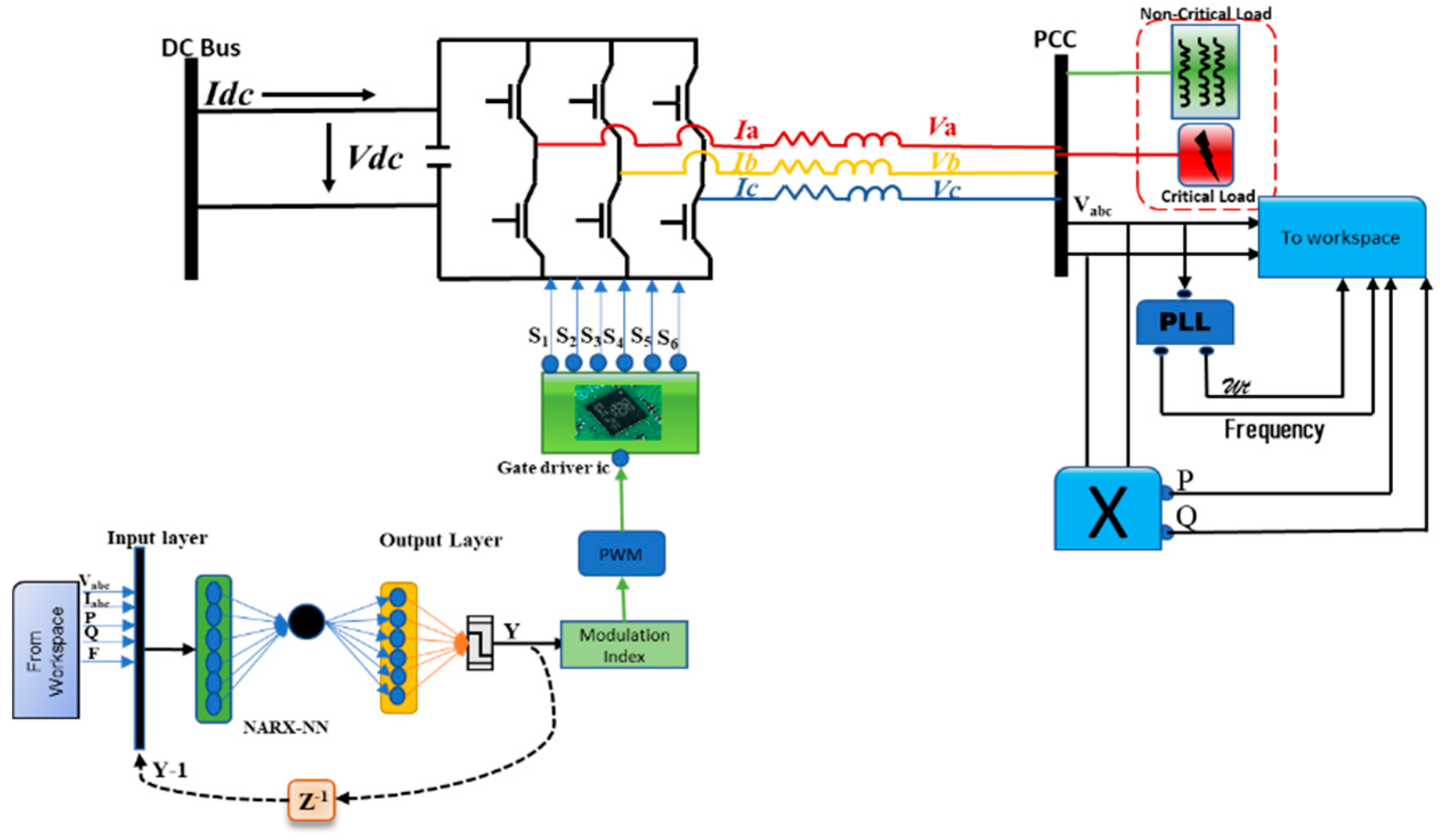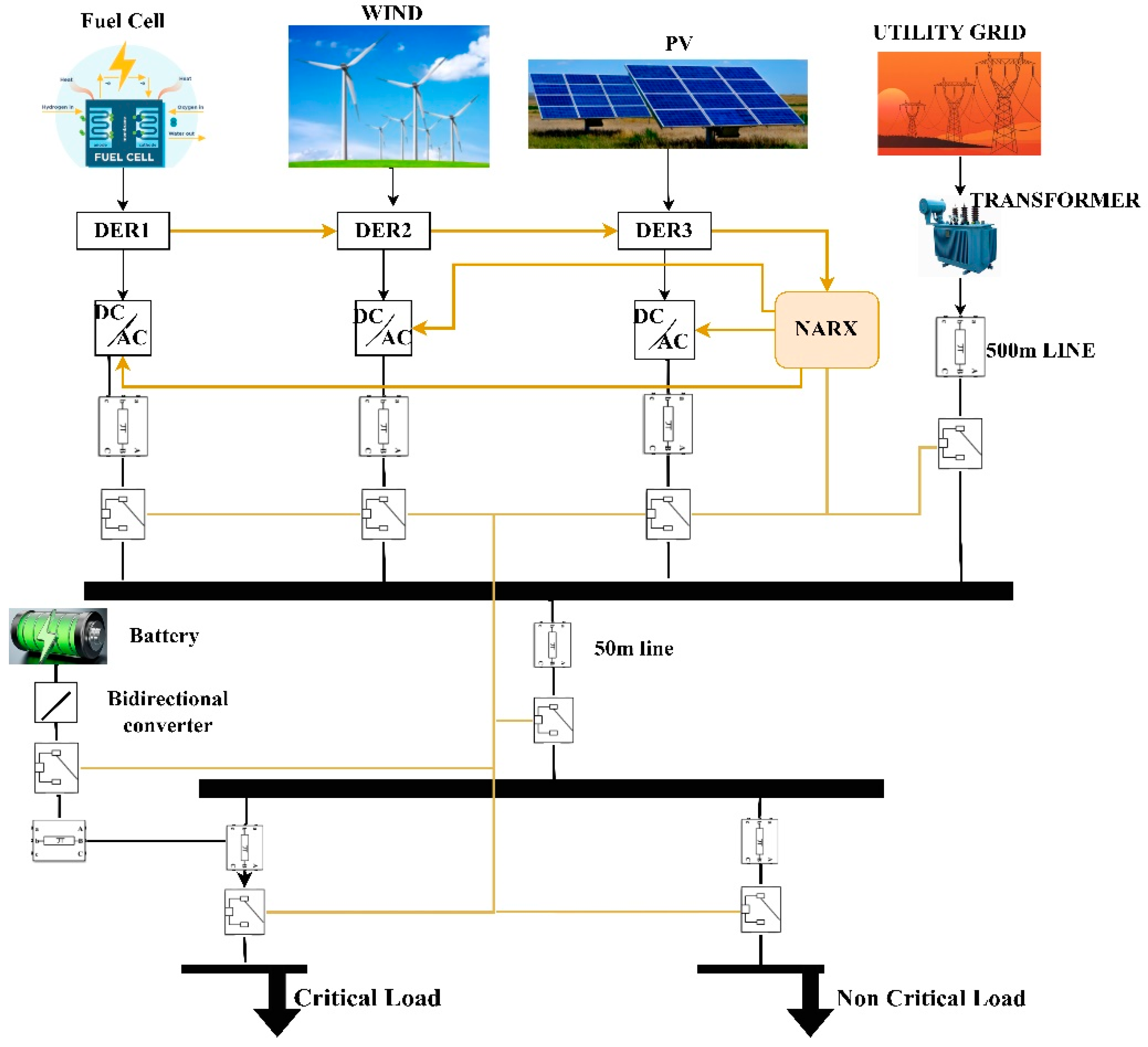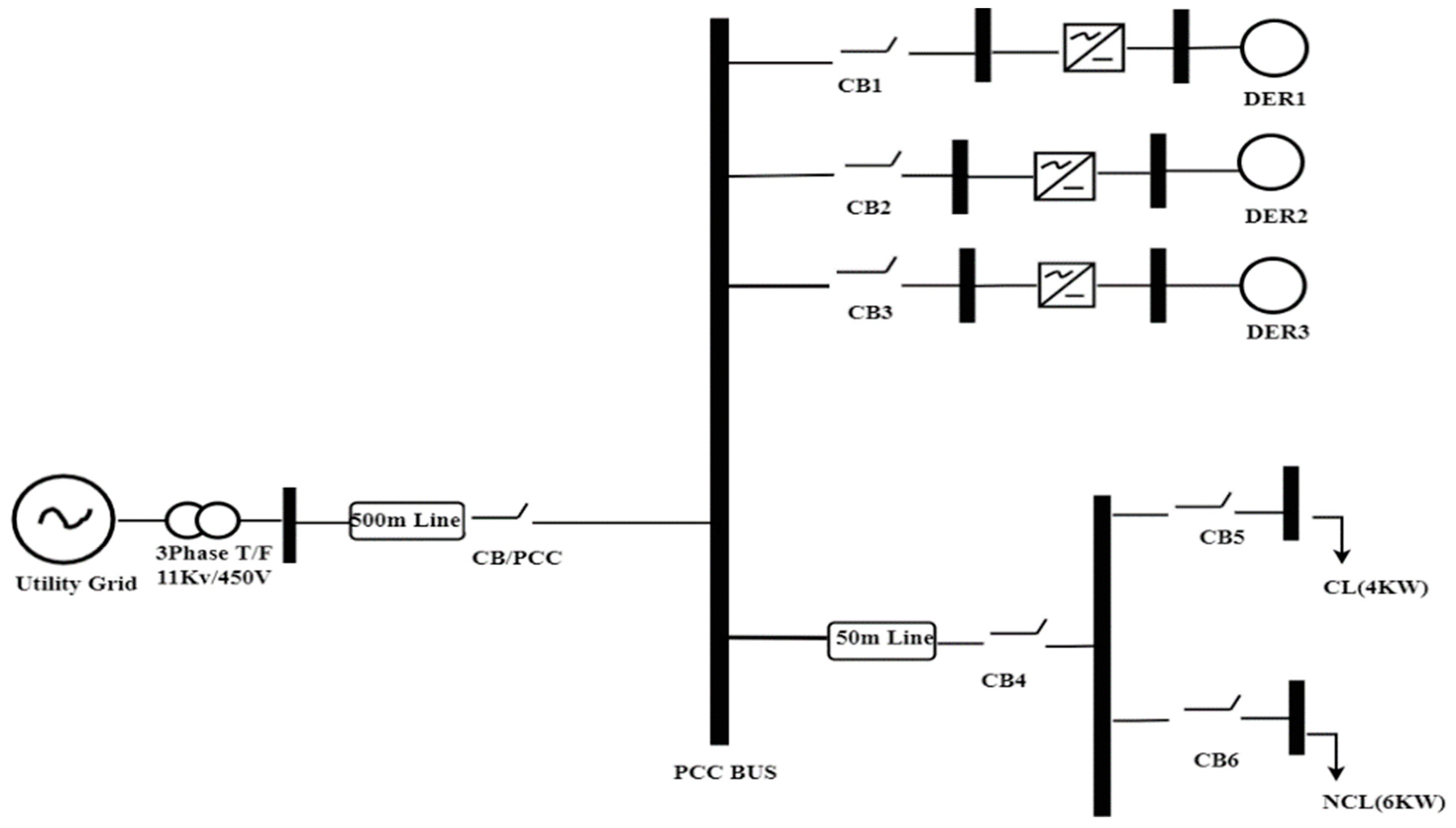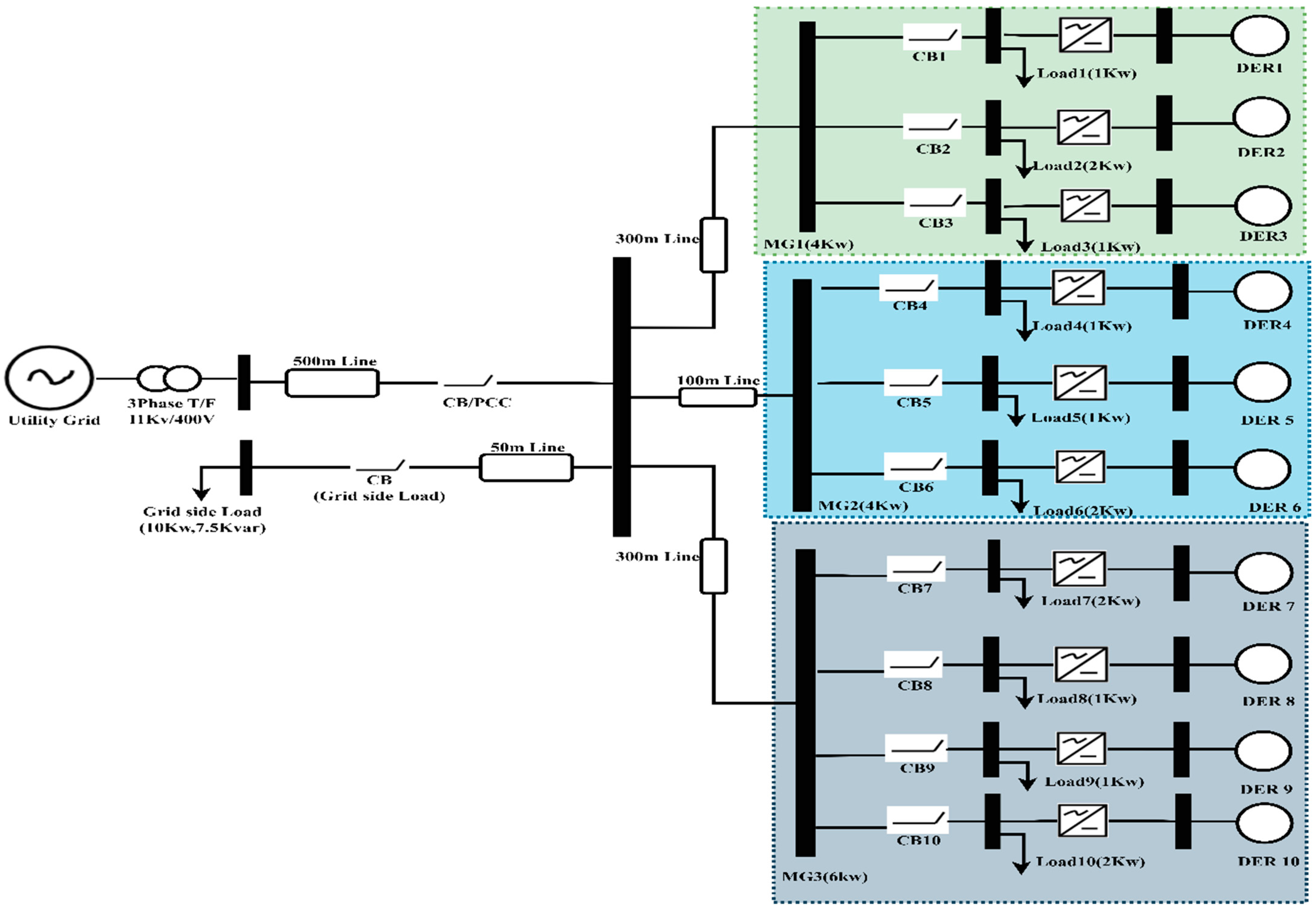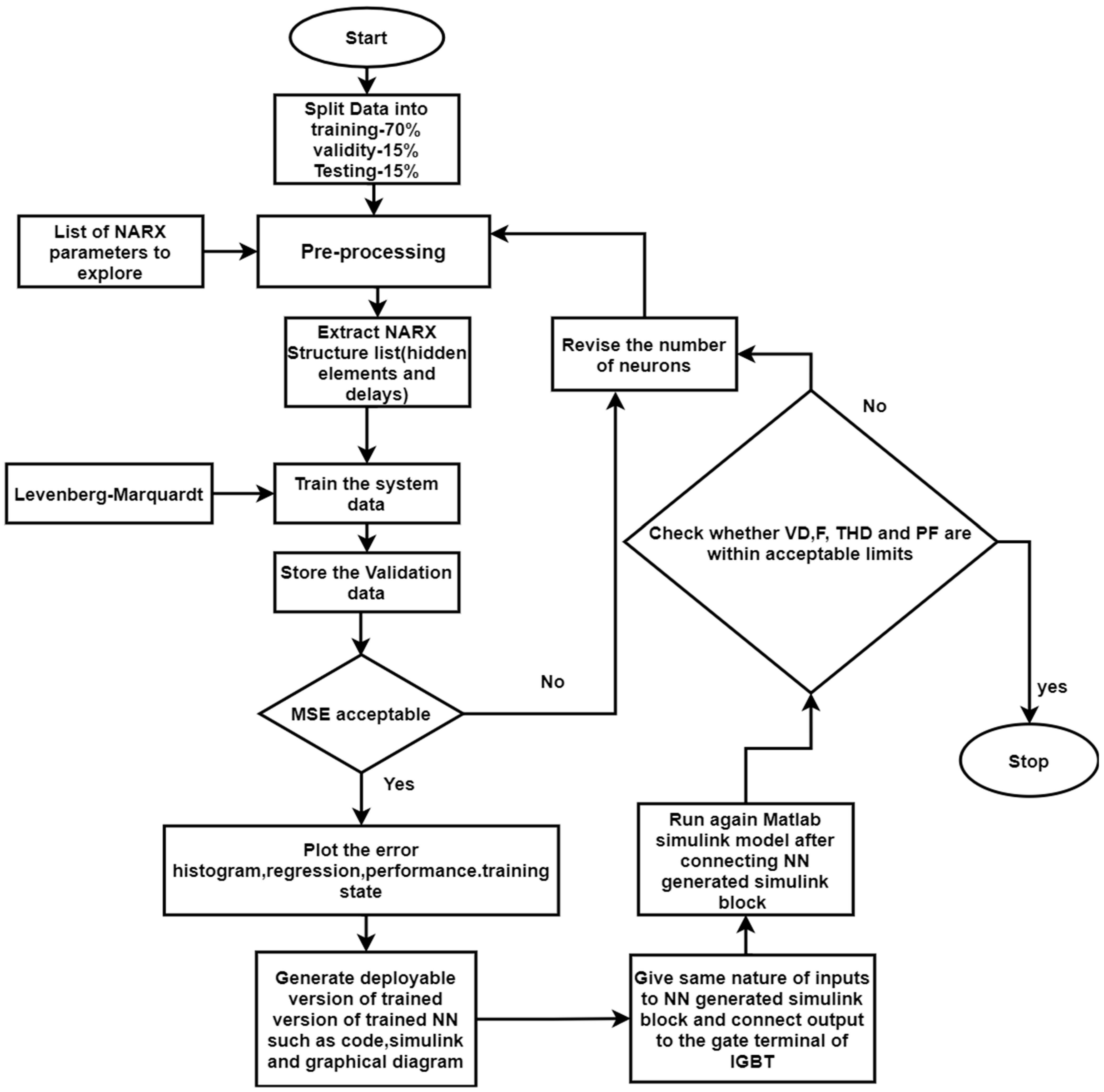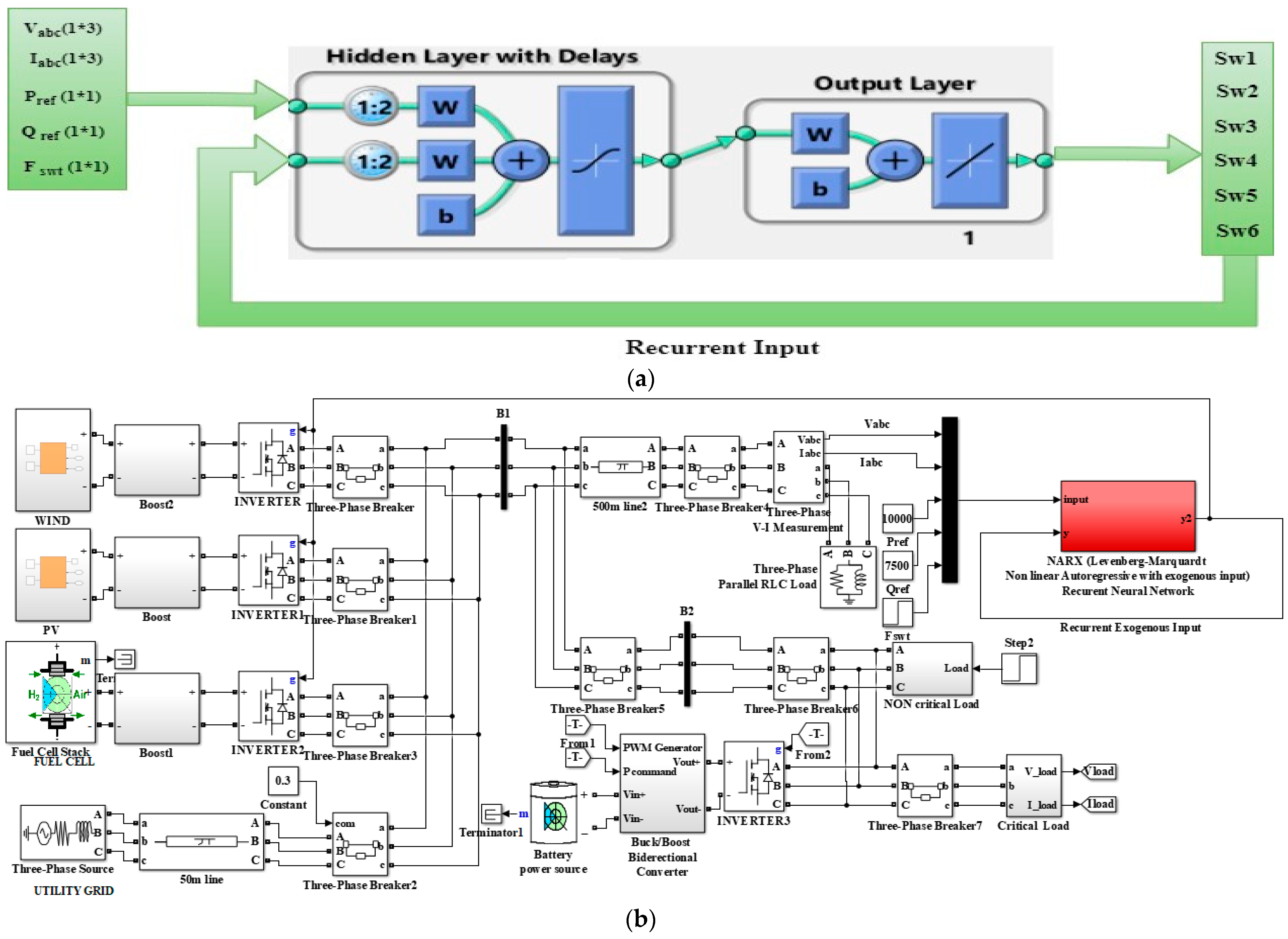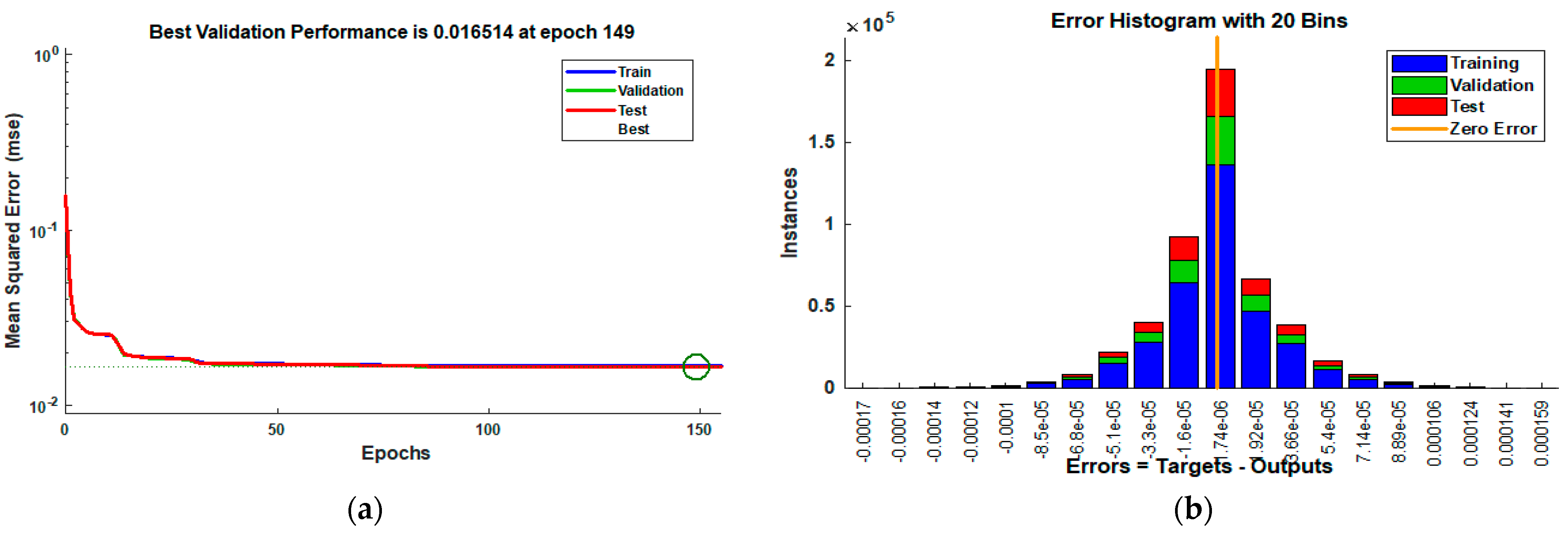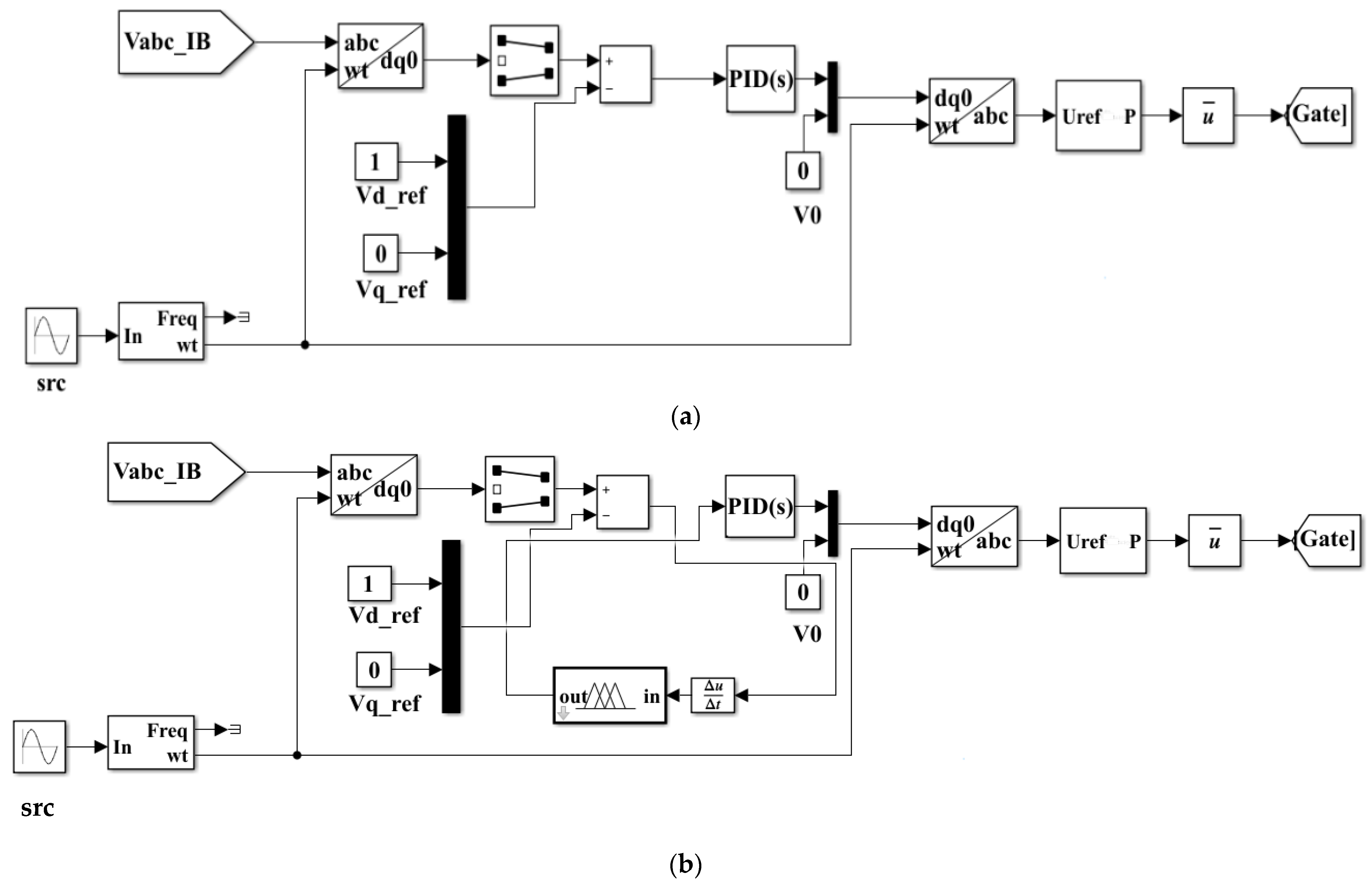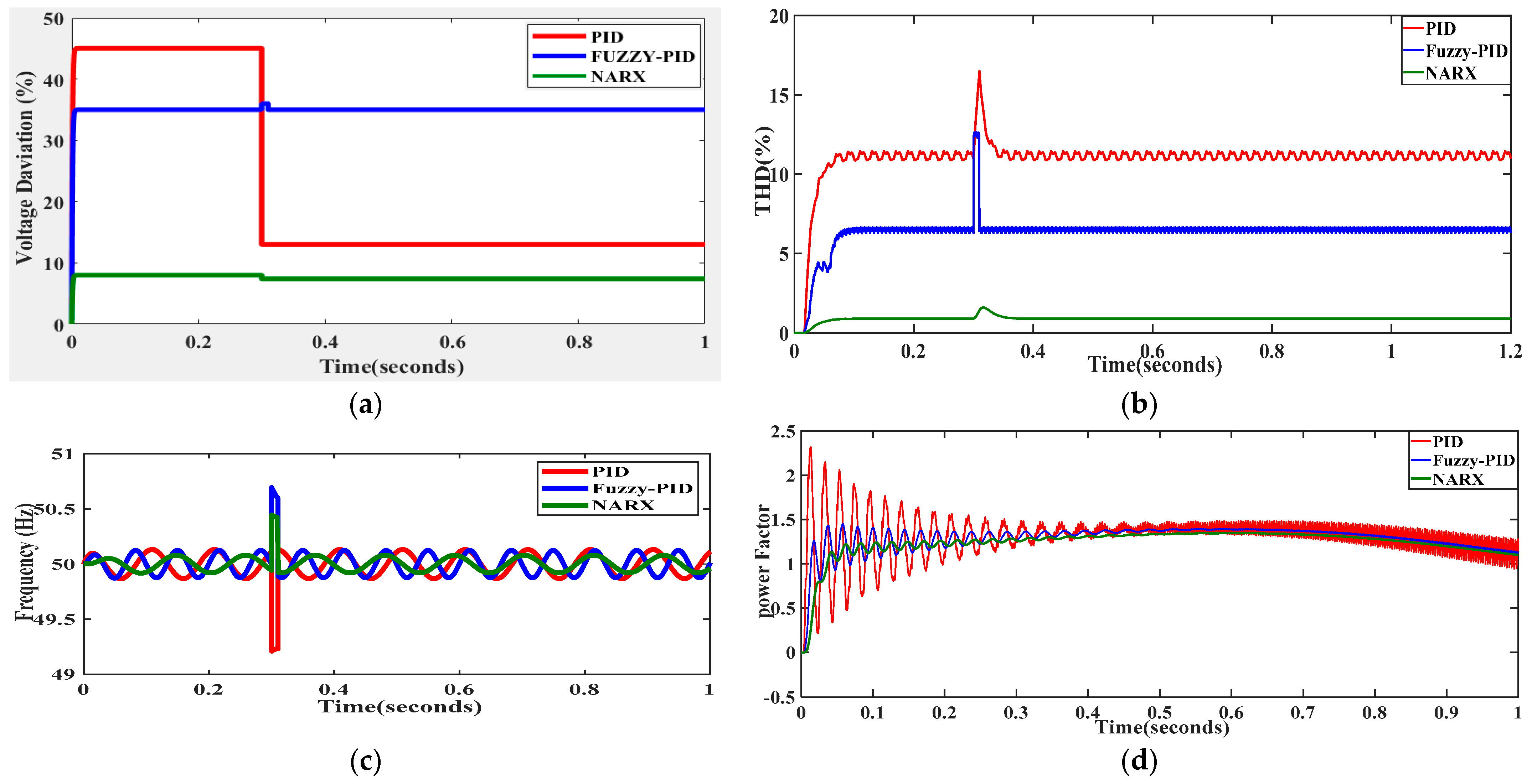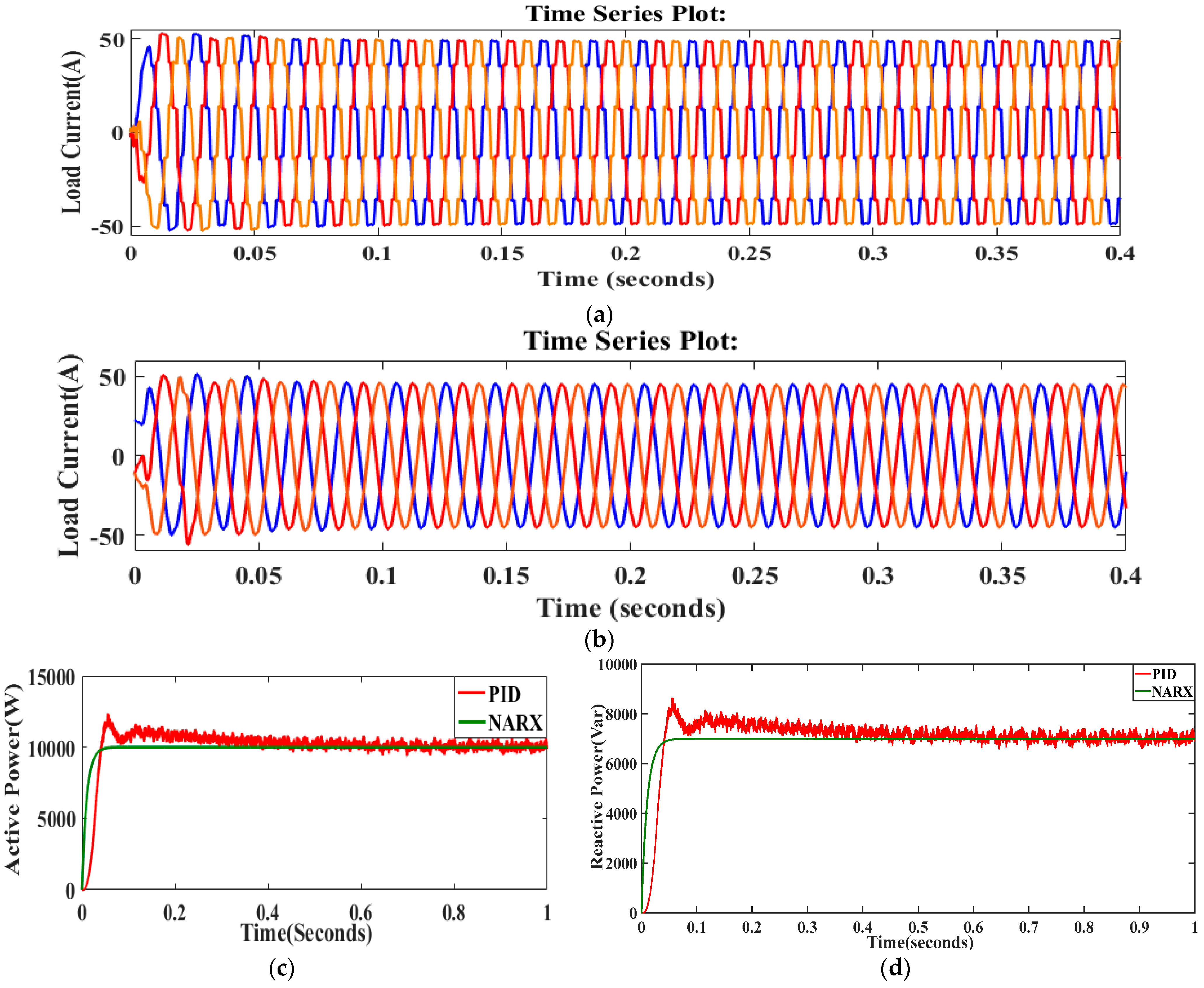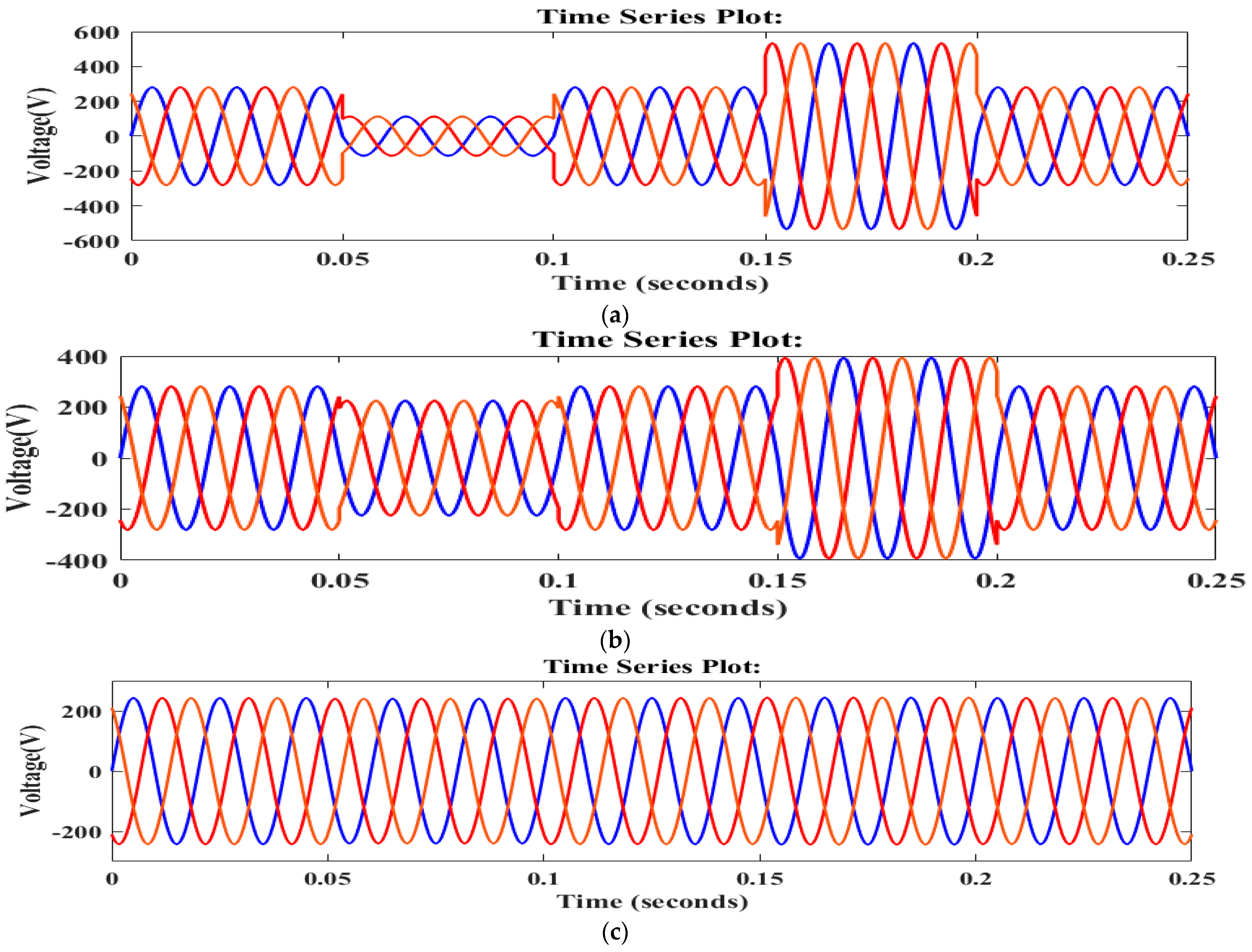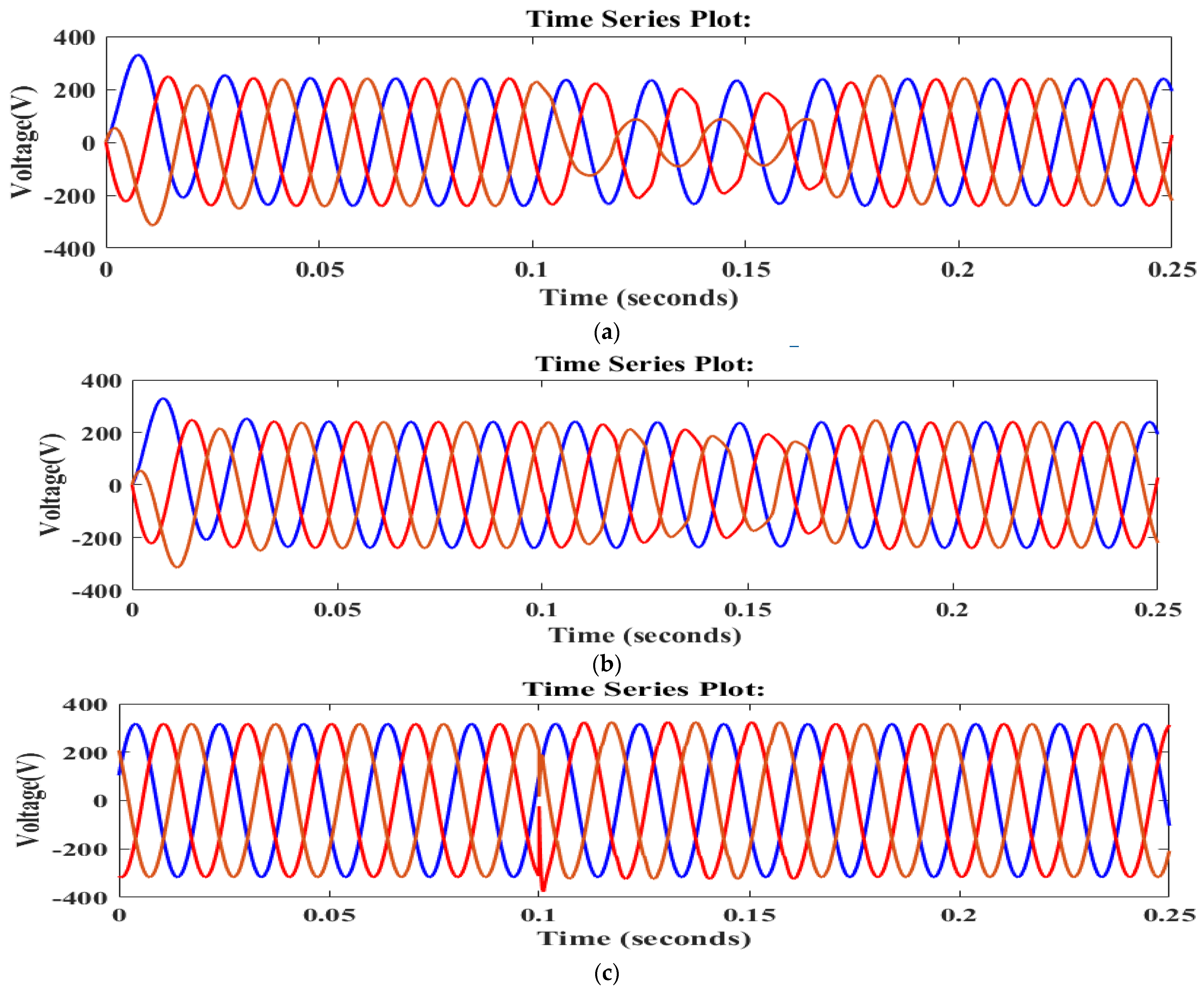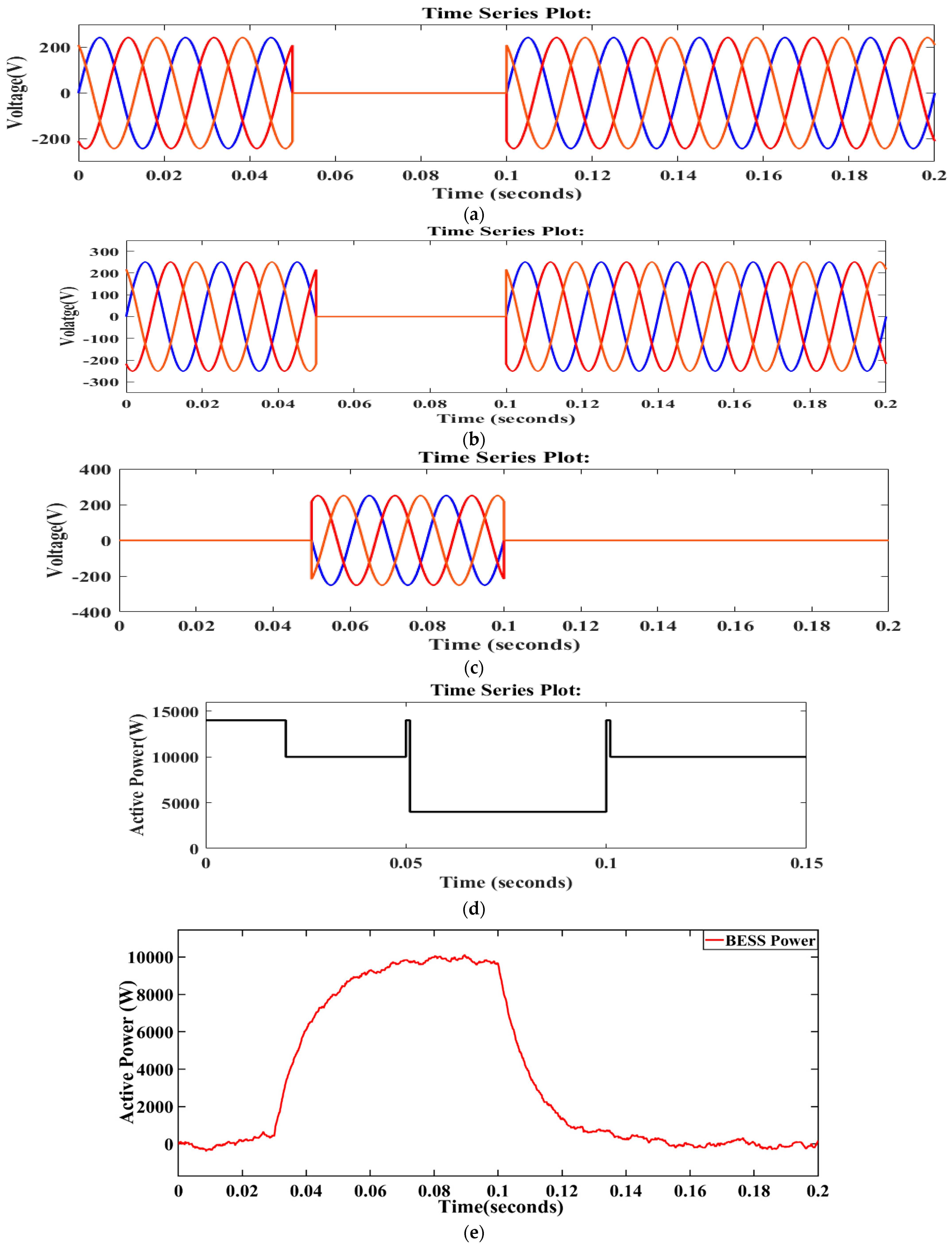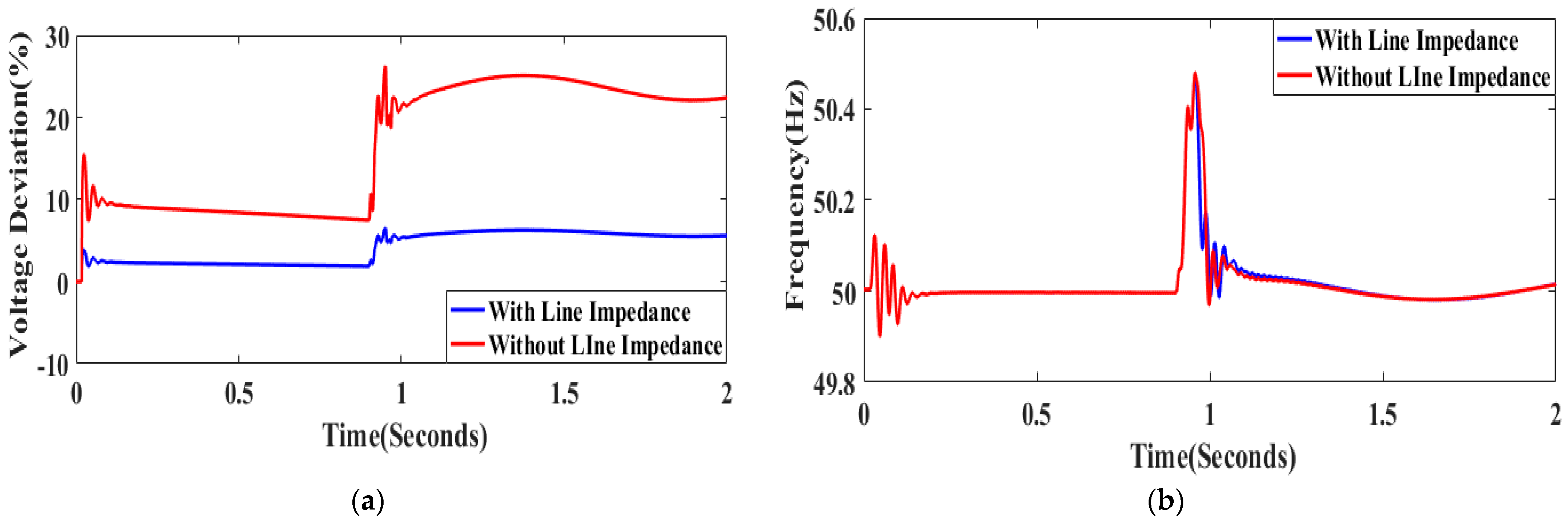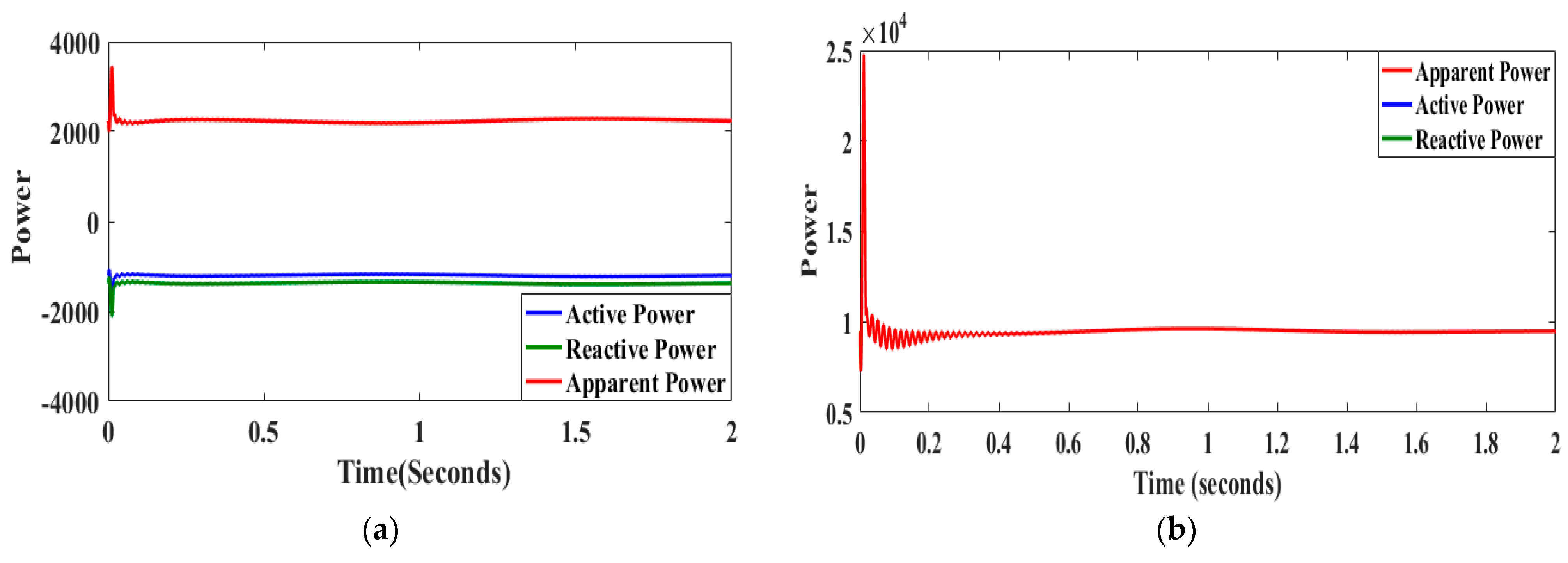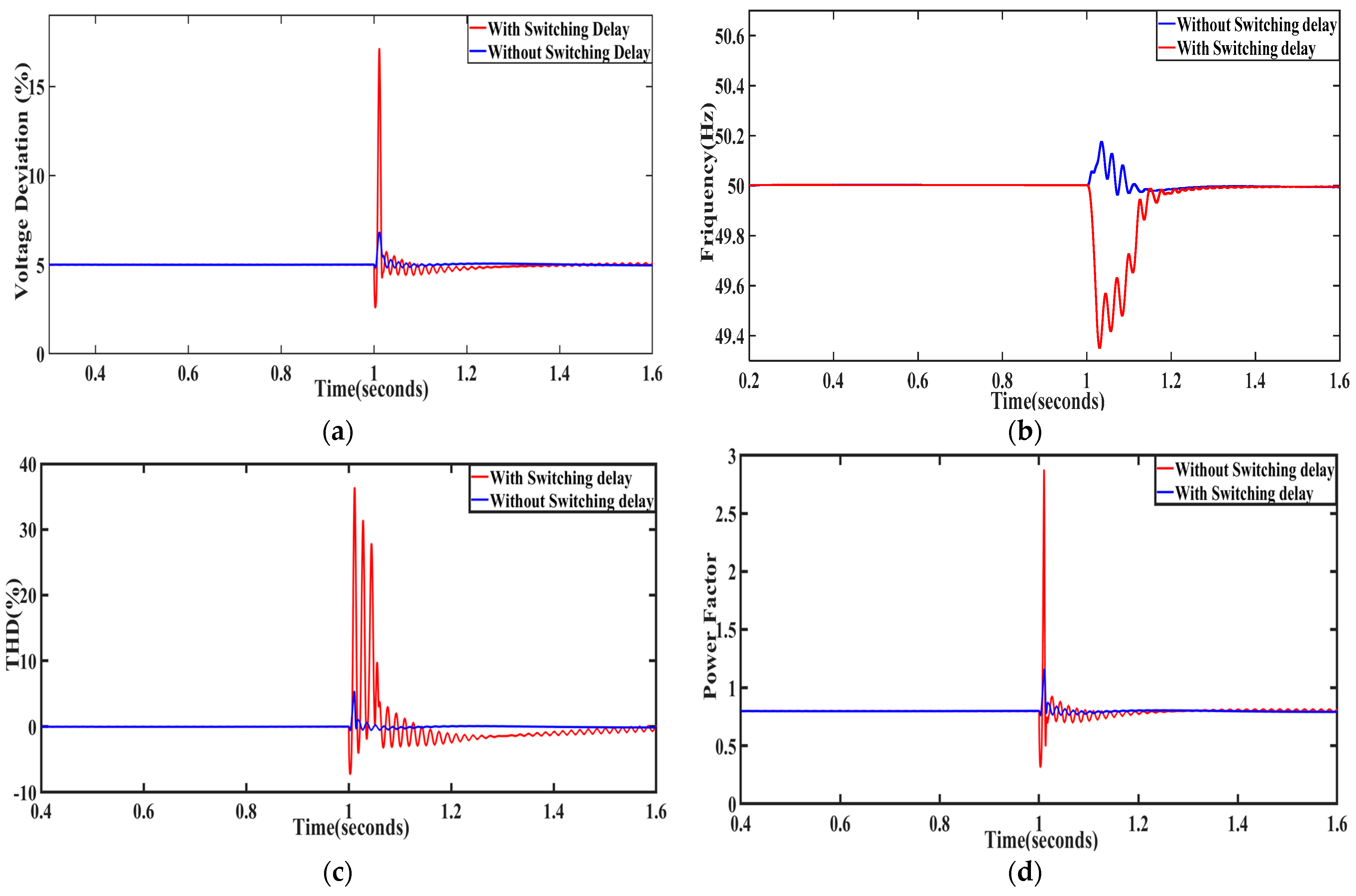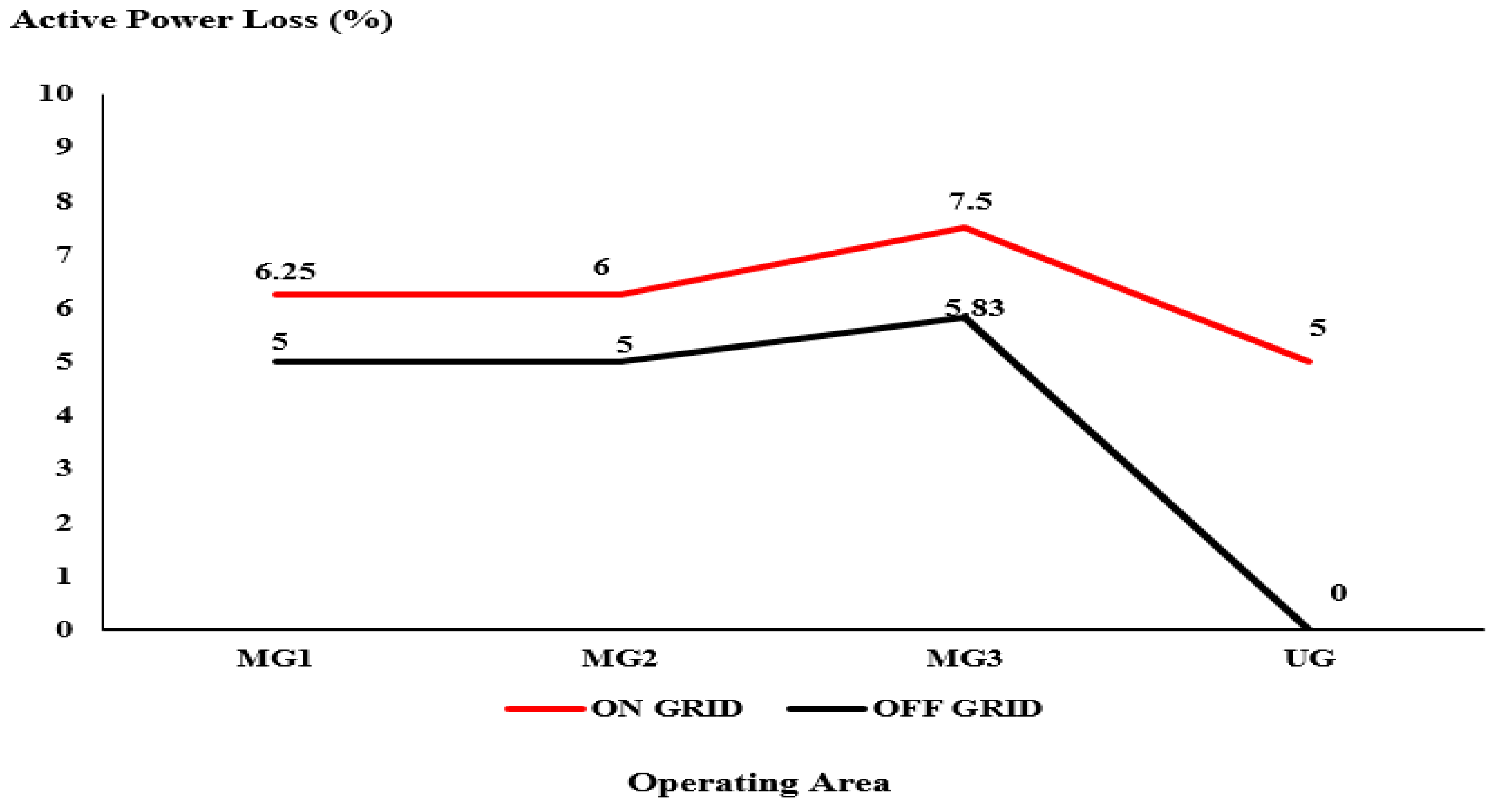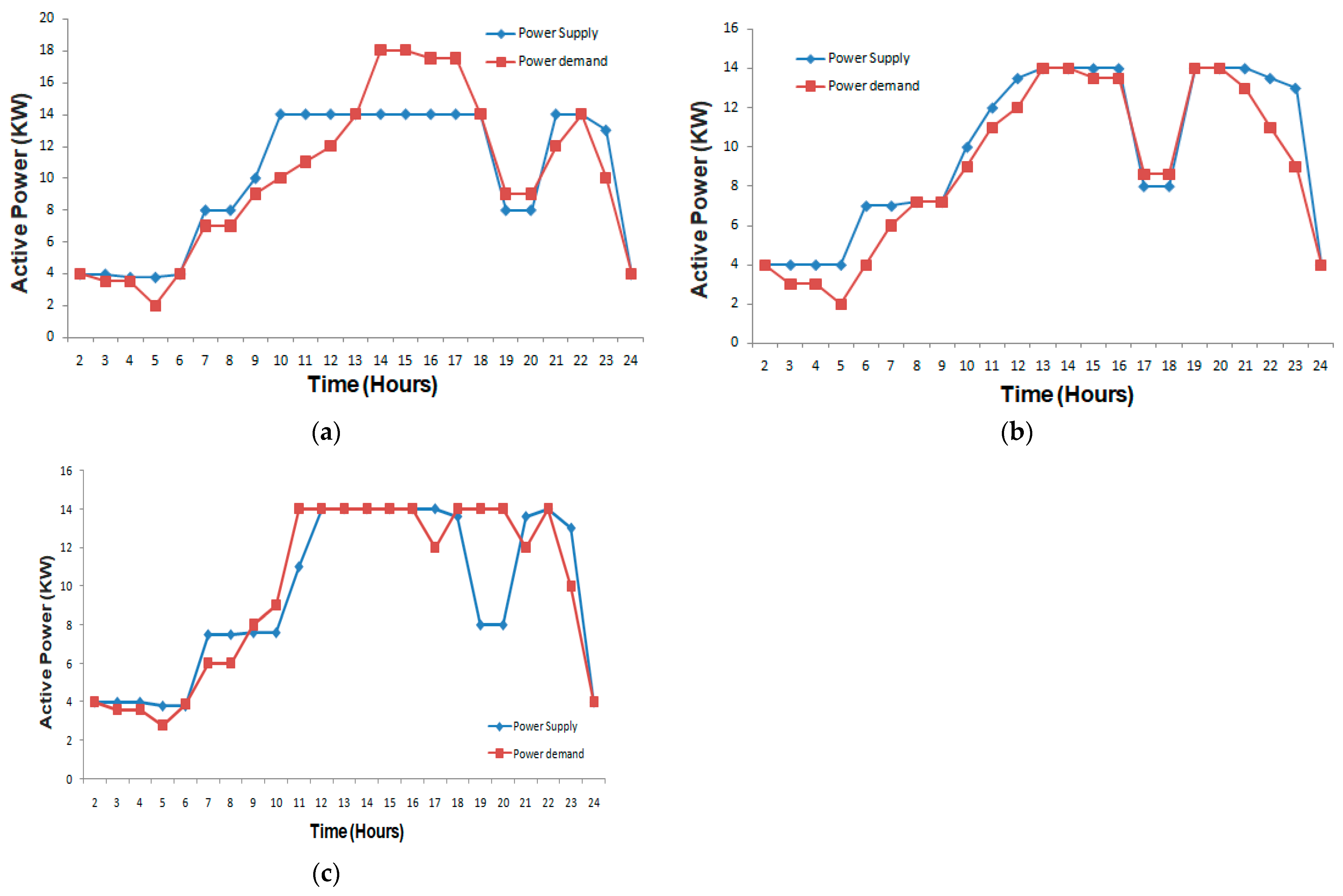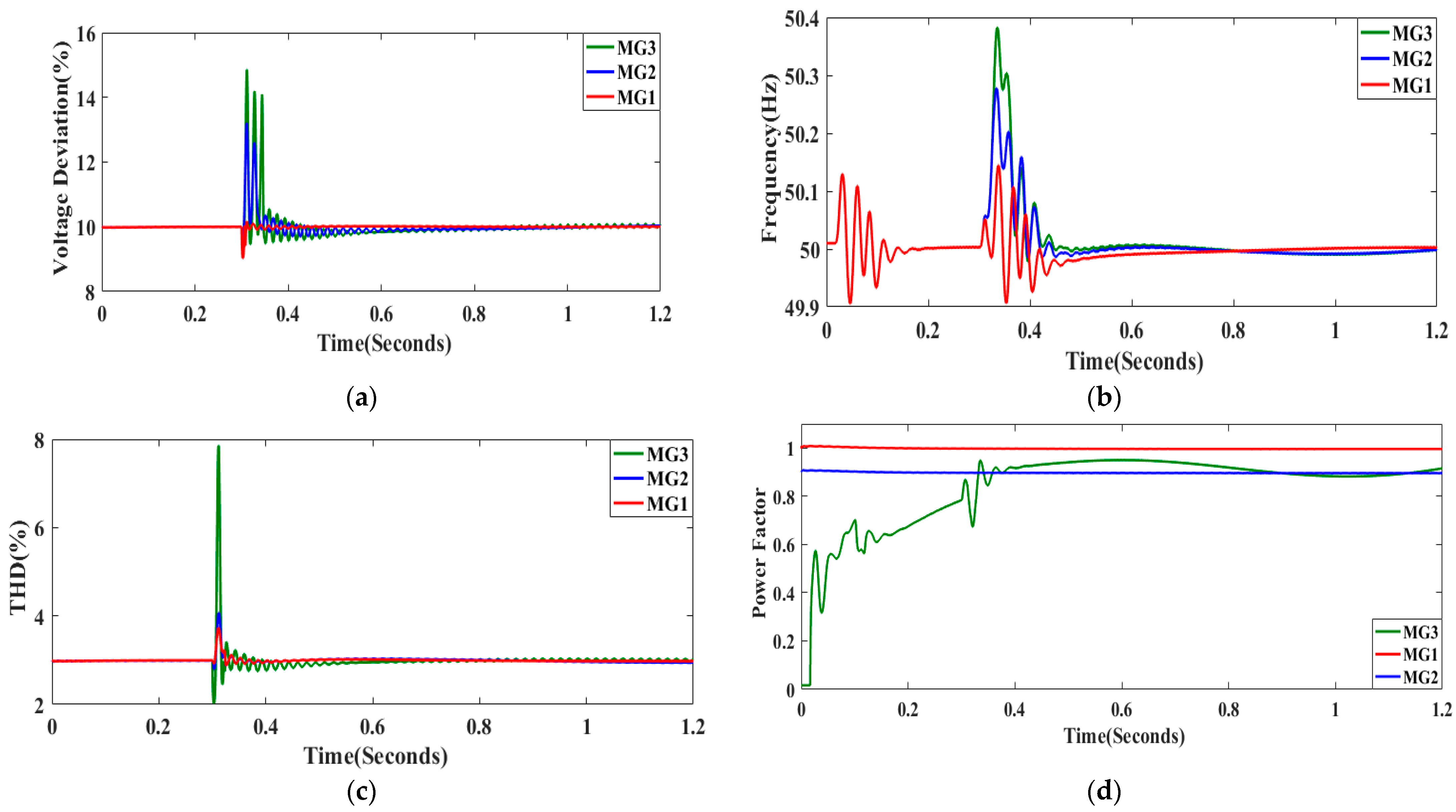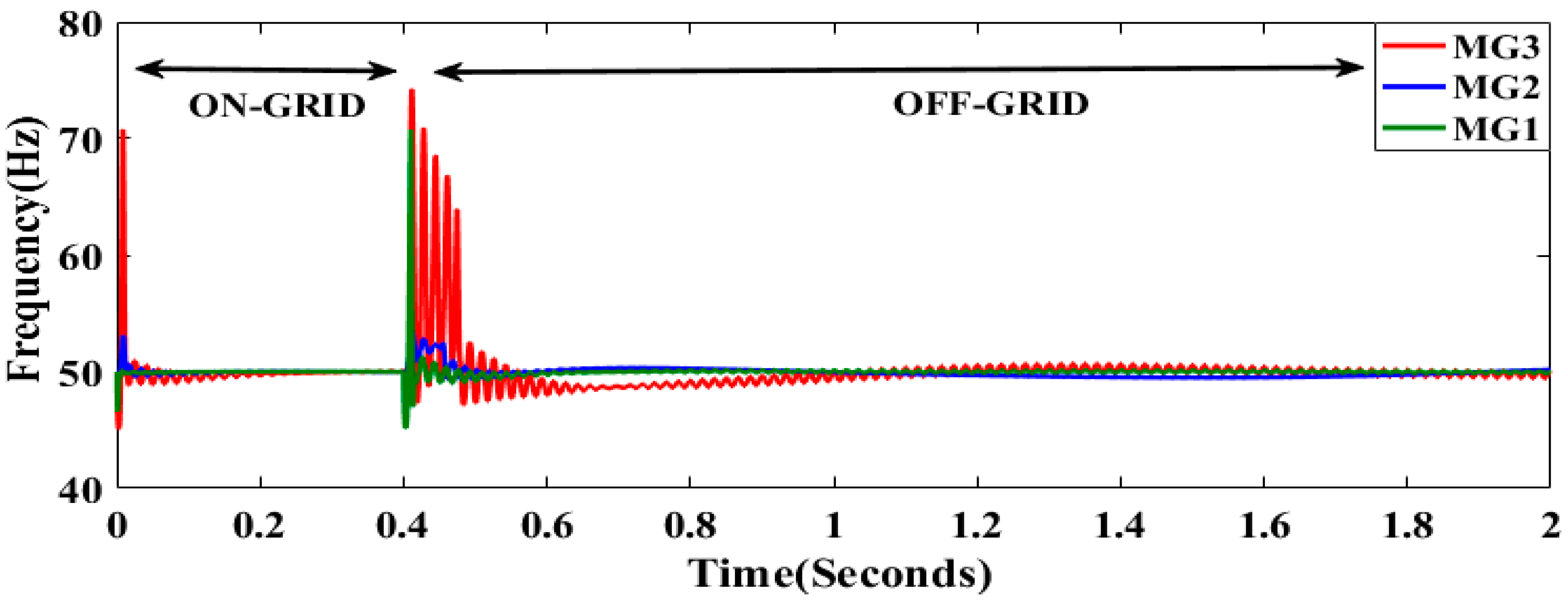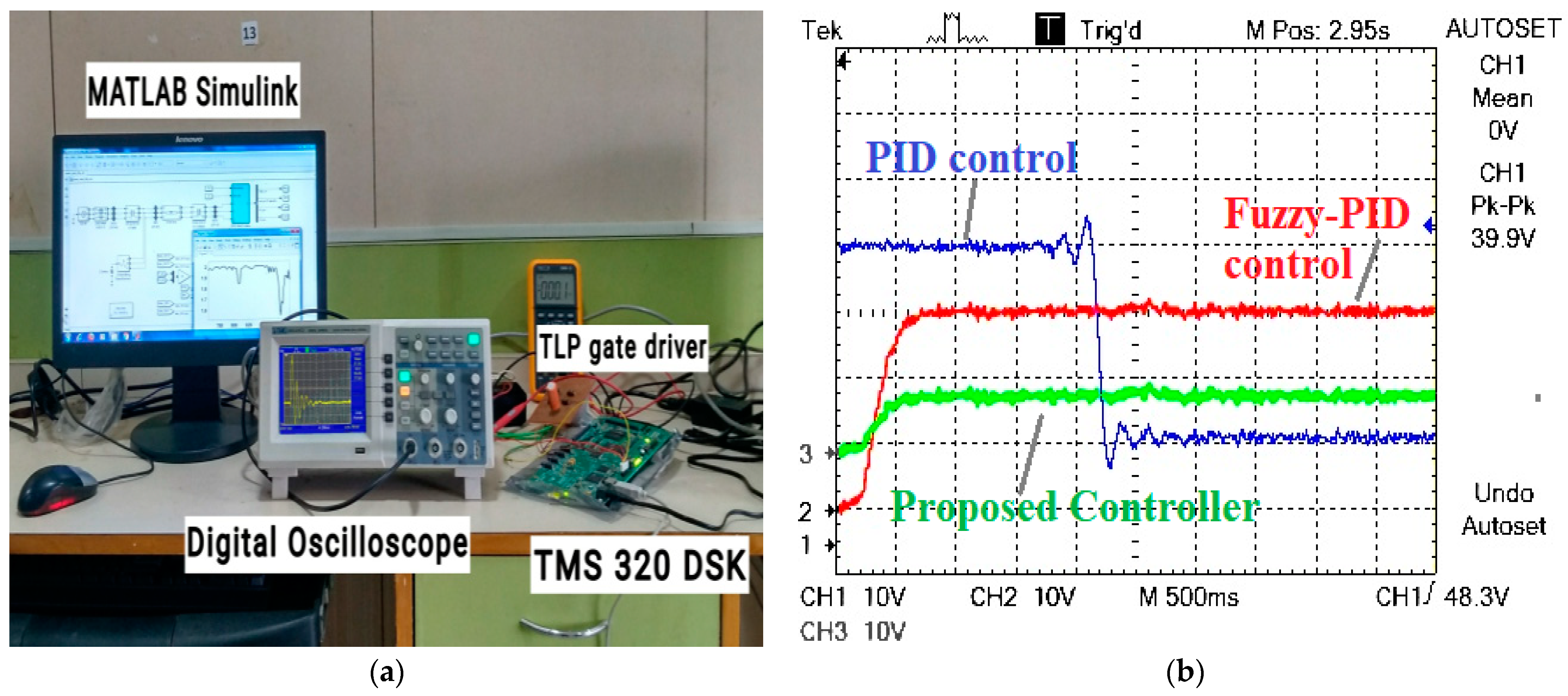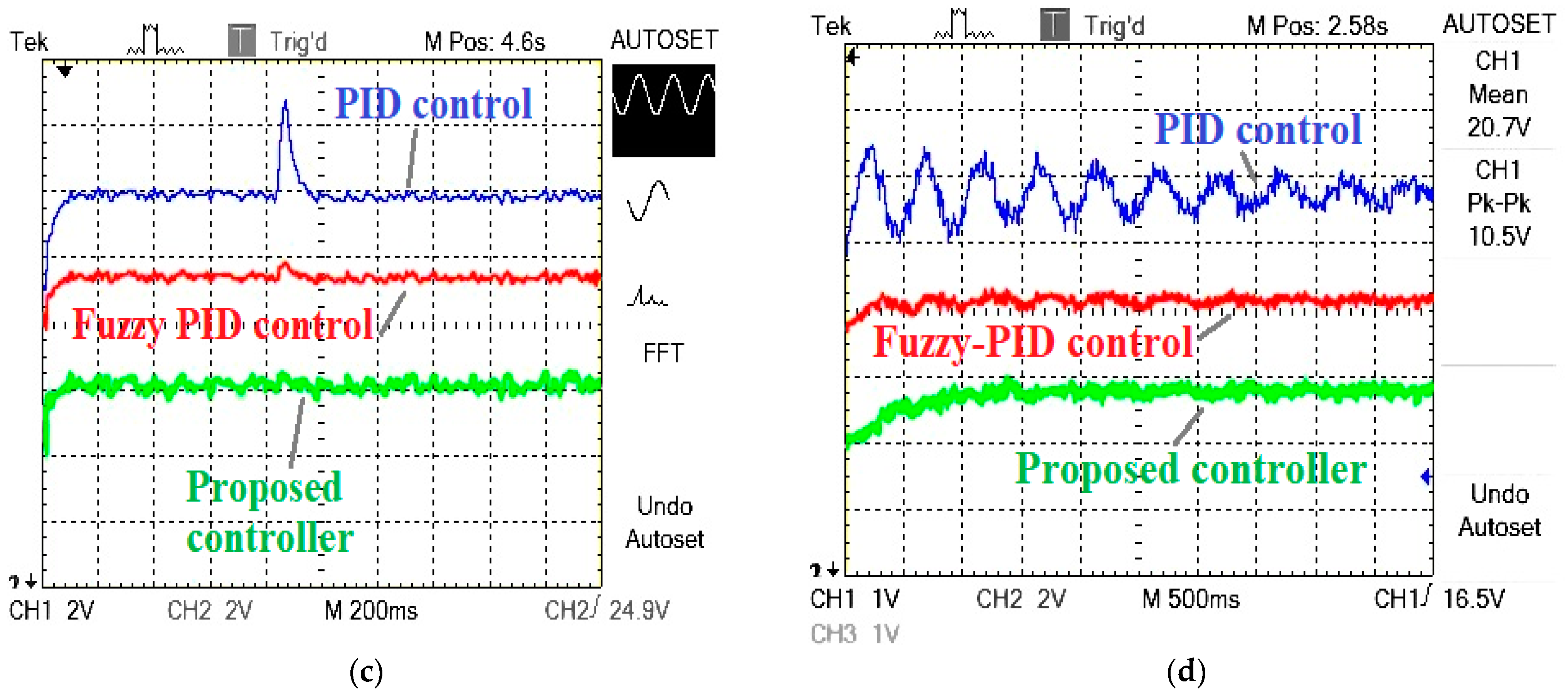The depletion of traditional energy sources leads to the utilisation of non-conventional energy sources such as PV arrays, windmills, geothermal energy, fuel cell, etc. These sources are also known as distributed energy resources (DER), which are vital in the modern grid system. The DER-based resources lead to the vast utilisation of power electronic devices, which introduces PQ issues in the network. These small-scale resources give rise to MG, which is connected to the grid but can operate in islanded mode whenever required. The power generation in MGs is associated with several factors and limitations. For instance, solar energy depends on solar irradiance, humidity, climatic conditions, etc., while wind energy depends on wind speed, geographical conditions, and climatic variations. MG’s efficient operation requires that the power quality remain within an acceptable range for better domestic and industrial uses, causing reduced harmful effects to the supply side. Custom power devices such as custom power active transformer (CPAT) can decrease the fluctuations in sinusoidal waveforms at both the load and the source end by integrating both series and shunt power conditioning devices with a unique magnetic circuit modification and auxiliary windings of the transformer [
1]. Custom power park (CPP) has been established to deal with the PQ issues, which contains a dynamic voltage restorer (DVR) and static transfer switch (STS) and is supplied by two feeders. The STS selects an alternate feeder whenever a fault happens in the preferred feeder. The two-inlet DVR-based on the matrix converter can deliver steady voltage [
2]. The power quality instabilities, such as single and combined PQ turbulences, are distinguished and categorized utilizing sparse signal decomposition on hybrid dictionaries allowing for different noise intensities [
3]. A control method for a novel hybrid static var compensator in parallel with a hybrid active power filter (HSVC//HAPF) is proposed in [
4], where the SVC portion of the HSVC//HAPF is used for dynamic compensation of the unreal power and the HAPF portion is responsible for providing harmonic power and minor compensating unreal power. An isolated, dual-converter topology is inherited for a high-power D-STATCOM, where coupled inductors built on single magnetic cores improve both the transient response and the steady-state error in the system [
5]. The custom power devices (CPDs) are presented in [
6], which could perform extensive research in power quality regulation for domestic loads. The power factor might be preserved with static var compensator (SVC) and real power filtering by using reactive power reimbursement to improve the quality of power. The open unified power quality conditioner (UPQC-O) performs reactive power compensation for power quality improvisation. It is a CPD consisting of series and shunt inverters. The UPQC-O is incorporated with a battery energy storage system (BESS) to introduce real power to the system throughout peak hours for peak load shaving [
7]. Enhancing power quality, consistency of power and complex load reimbursement in a PV-based MG having BESS are accomplished by performing an improved form of the adaptive filtering method, such as a “momentum”-based least mean square (MLMS) control algorithm, applied for controlling the switching signals to the voltage source converter(VSC) at the grid [
8]. Smart abstraction and optimum power dispatch by utilising a fuzzy-logic controller (FLC) through a combined generating unit tied with the grid are given in [
9]. An innovative artificial neural network (ANN) control method has been performed in [
10], which can improve the PQ issues more accurately. The above literature emphasises the regulation of power quality and power reliability for MGs. Both large- and small-scale MGs require improvement of power quality issues, and at the same time, the fulfilment of requirements of both the demand and supply sides must be considered. MG advocates for the combination of dispersed production units, such as windmills, fuel cells, PV panels, etc., in a typical geographical area. The healthy operation of MGs requires better coordination and control of itself for different stages of DERs and loads, as well as the proper configuration of the MG [
11]. Dynamic NN-based control is proposed in [
12] for operational scheduling, centralised, decentralised and dispersed methods for MG control. The general functional coordination of an MG can be enclosed with the grading of a network interface, MG regulation, fortification, and organisation [
13]. A new smart working methodology has been developed by the unified use of FLC and the particle swarm optimization (PSO) techniques for modifying and optimising the conventional proportional-integral (PI) method for better control of frequency in the AC-based MGs [
14]. Shunt active power filter (SAPF) could reimburse unreal power (P) as current harmonics are centred on an ADALINE neural network-based current sensor, which can regulate the SAPF for maintenance of sine wave property of source currents and power factor (PF) closer to 1 as presented in [
15]. A generalised droop control (GDC) system for an extensive array of load alteration cases is developed in [
16], based upon conventional voltage/frequency droop control. A new structure established upon adaptive neuro-fuzzy inference system (ANFIS) is suggested to eliminate its dependence on the line parameters changes. A leaky least mean fourth (LLMF) control procedure is projected for the compensation of reactive power, mitigation of harmonics, load harmonising, and power factor improvement of a three-phase single-level grid-coupled PV array connected to a static compensator [
17]. Moreover, for optimisation of power quality of a PV-based DSTATCOM, techniques such as adaptive reweighted zero drawing control method through perturbation and observation-based maximum power point tracking (MPPT), controlling algorithm, JAYA optimisation technique to enhance the PI-controller parameters are proposed [
18,
19,
20]. Supply systems’ power quality improvement and consistency are performed by commissioning optimal network reconfiguration (ONR) [
21]. ONR is fed autonomously to a system in a predefined interval to minimise the number of transmitted voltages drops. The distortion and disturbance reimbursement to decrease the voltage distortions at the point of common coupling (PCC) is performed with a new hierarchical regulation system which utilises a complementary control loop for small- and large-signal stability improvement [
22]. A synchronised controller having current-controlled mode (CCM) and voltage-controlled mode (VCM) components for reactive power distribution and voltage harmonics reimbursement is suggested in [
23] and based on the local measurement of signals. The reimbursement of highly fluctuating load stresses in a distribution network is achieved with a superconducting magnetic energy storage (SMES) associated shunt active power filter (SAPF) [
24]. An adaptive neuro-fuzzy inference system has been utilised for online minimum real power inoculation with UPQC by collecting the PSO-based data for different voltage sag circumstances in an AC-based MG [
25]. The hybrid method combining the bacterial foraging optimization algorithm (BFOA) and ANN method is utilised [
26] to decrease the generation charge and enhance the usage of DERs in an MG model containing a PV array, wind turbine, and storage system. A decentralised droop-based controller scheme with three graded control levels for either grid-connected or islanded modes of operation has been described in [
27] with a unique application of radial basis function neural networks (RBFNNs) for precise and firm power sharing in an MG with several DERs. A hybrid energy storage system (HESS) employing a SMES and the battery is considered to compensate for power fluctuations within an MG. Operation of an MG at a remote location supplied from the windmill and a PV array is proposed in [
28], where voltage and frequency are regulated with the help of an indirect vector controller at the line side converter, which is integrated with droop characteristics. The PV system operates in either MPPT or loads power tracking mode to avoid overcharging the battery depending upon the battery’s state of charge [
29]. The novel gradient descent least squares regression (GDLSR) centred neural network (NN) structure for the regulation of grid-connected solar panels can improve the PQ issues [
30], where a single-layer neuron arrangement is utilised for the abstraction of a fundamental constituent of load current. In most of the above-discussed literature, most of the research papers suggest improved techniques for enhancing power quality issues such as voltage swell, voltage sag, power fluctuations, harmonics in the load current, etc., in a typical MG; however, the simultaneous consideration of voltage, frequency, THD, and power factor as assessing factors has not been well-thought-out in MG operation. So, for the efficient and reliable operation of MGs, most of the power quality issues must be taken as factors and should be dealt with carefully by minimising the unwanted fluctuations in the system. This work demonstrates improving the power quality disturbances by taking into account issues such as power factor, total harmonic distortion (THD), voltage sag, and voltage swell simultaneously. At the same time, the versatility of the proposed work has been verified by considering different test scenarios such as miniature MGs, MGs where line impedance is considered, and a complex MG structure. The load variations taken in the model can explain the operation of the model on varying load conditions.
